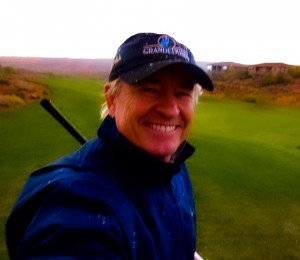
When I was 24-25 years old, I worked at a golf club as an Assistant Professional. Assistant golf professions typically don’t get to play much golf during the season. Perhaps I might play 2-3 full rounds a month, but the rest of the time I was attending the golf shop, except for giving lessons. Part of that was providing 9-hole playing lessons with members. This was immensely satisfying as I could help everyone, no matter their level, improve their game, sometimes substantially.
A 9-hole playing lesson would be composed of just the two of us. I would tee off first from the back tees explaining my thinking and planning, club selection, target, strategy, feelings, etc. The man, woman, or junior would then tee off from their more forward appropriate tees. I would ask them about the same issues and together we would explore different options. If they had a general swing issue like alignment or tempo, I might illustrate how I might perform, but otherwise I would stay away from the mechanics of the swing .
Now no golf professional wants to play poorly in front of their pupil and I was no exception. Suffice it to say, that season I played pretty well. Never once in nearly two dozen playing lessons did I shoot over par. I was a decent player, but that body of work with a few exceptions was superior to the rest of my play that season. Why?
Why did I play consistently better than I might with my buddies or in a regular round of golf? Was it the needling or joking, competition, or maybe the occasional betting that affected me? No. I enjoyed all of that. Perhaps it was my pace, self-talk, focus, and strategy. At that time, I was quick to trust my acquired talent and maybe not as deliberately aware of myself or my surroundings. In these playing lessons, I had to set the example of what I was teaching my student and was fully aware.
- I played within myself hitting shots I was very proficient in playing. I did not take many chances.
- I made aggressive, fearless swings at safe targets always thinking ahead where I would want to miss so I might better recover. This I would communicate before playing the shot.
- I slowed down. In communicating the play of each shot, I took deliberate action to enunciate all my process and then lead by example. Otherwise, I was a very quick player.
- If I hit a bad shot, as I would communicate to my student, I would address how an expert might emotionally purge any bad or negative feeling allowing the next shot to be performed from an emotionally clean slate. While I always had a positive attitude on the course, verbalizing and exhibiting it added another dimension to it.
- I had experienced winning at the state, collegiate, and professional levels and had studying the game so I felt fully confident in my ability to help. Perhaps in tournament play, I did not feel that same level of confidence though I had no reason not to.
I had previously been a pretty decent player, but when I reflected back on that season, I realized that in the rest of my play, I was not as aware, not as deliberate (not in a time-consuming way), confident, and not as focused as I had been during those playing lessons.
Jump ahead some fifteen years, all of a sudden I am the Executive Director for one of America’s largest PGA Sections. In the meantime, my golf was totally recreational and except for an occasional club competition, I didn’t much care. As a result, my game had declined badly. Now my game would be on full display to my PGA Members and their constituents. I would be representing the Section. This was new pressure for me not unlike my earlier playing lessons.
I decided to play golf with the same emotional and thought processes as had during my playing lessons. From a state of disrepair, my game almost instantly improved more than ten strokes and I resumed playing better than scratch and even set a few course records every year for two decades. Who says that golf is not an emotional and mental game!
